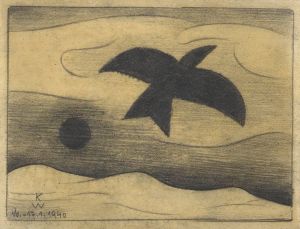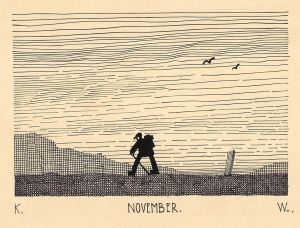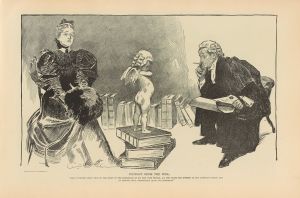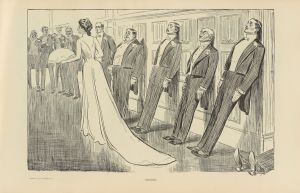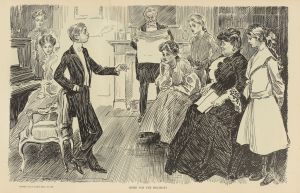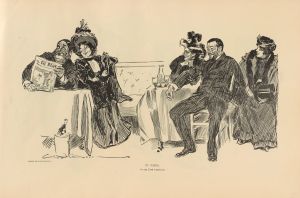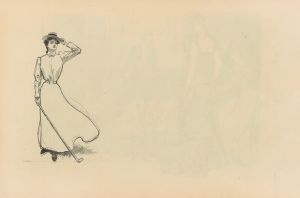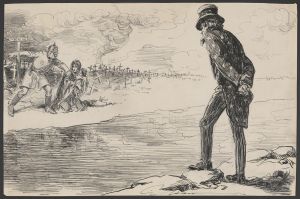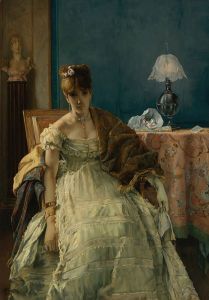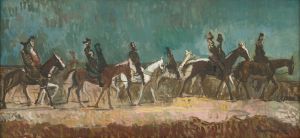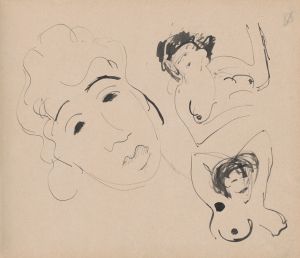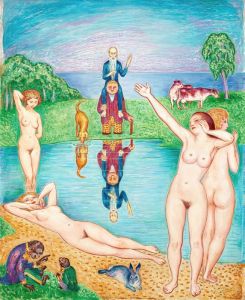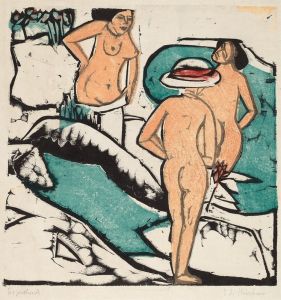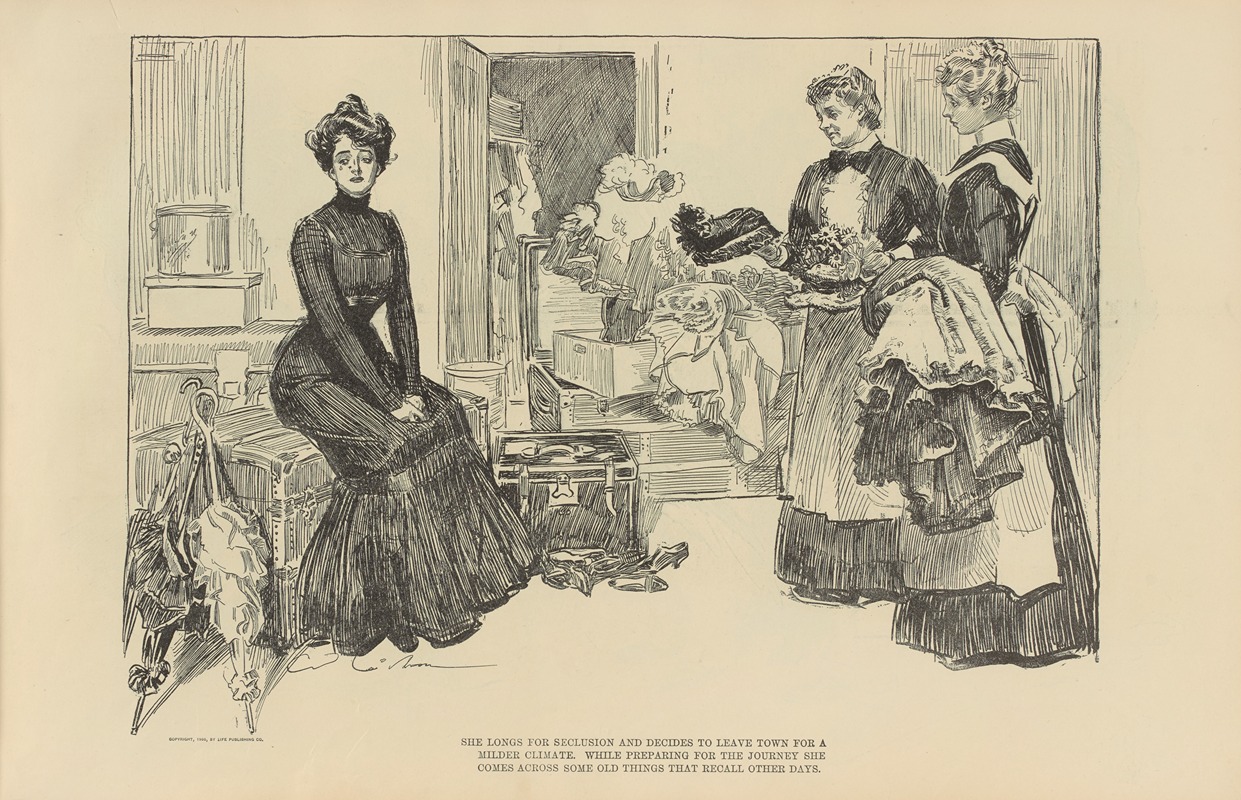
She longs for seclusion and decides to leave town for a milder climate
A hand-painted replica of Charles Dana Gibson’s masterpiece She longs for seclusion and decides to leave town for a milder climate, meticulously crafted by professional artists to capture the true essence of the original. Each piece is created with museum-quality canvas and rare mineral pigments, carefully painted by experienced artists with delicate brushstrokes and rich, layered colors to perfectly recreate the texture of the original artwork. Unlike machine-printed reproductions, this hand-painted version brings the painting to life, infused with the artist’s emotions and skill in every stroke. Whether for personal collection or home decoration, it instantly elevates the artistic atmosphere of any space.
Charles Dana Gibson was an influential American illustrator best known for his creation of the "Gibson Girl," a representation of the idealized American woman at the turn of the 20th century. His illustrations were widely published in magazines such as Life, Harper's Weekly, and Scribner's, and they played a significant role in shaping the visual culture of the era. One of his works, titled "She longs for seclusion and decides to leave town for a milder climate," is a fine example of his artistic style and thematic focus.
This particular illustration captures the essence of the Gibson Girl, who is often depicted as independent, confident, and fashionable. The title suggests a narrative of a woman seeking solitude and a change of environment, which reflects the broader themes of personal freedom and self-discovery that were prevalent in Gibson's work. The Gibson Girl was not just a fashion icon but also a symbol of the evolving role of women in society, as they began to assert more independence and seek new opportunities beyond traditional domestic roles.
Gibson's illustrations are characterized by their detailed line work and expressive characters. In "She longs for seclusion and decides to leave town for a milder climate," the composition likely features a woman in a contemplative pose, perhaps preparing for her journey or already in a setting that suggests tranquility and escape from urban life. The attention to detail in her attire and surroundings would be typical of Gibson's style, emphasizing both elegance and the narrative suggested by the title.
The context of this illustration is important to understand its significance. During the late 19th and early 20th centuries, there was a growing interest in health and wellness, with many people seeking the benefits of milder climates for both physical and mental well-being. This cultural trend is reflected in the illustration's theme, as the subject's decision to leave town for a more temperate environment aligns with contemporary ideas about the restorative power of nature and the desire for personal rejuvenation.
Gibson's work, including this illustration, was influential in both the art world and popular culture. The Gibson Girl became a cultural phenomenon, inspiring fashion, literature, and even the early film industry. Her image was synonymous with modern femininity, and Gibson's ability to capture the spirit of his time through his art made him one of the most celebrated illustrators of his era.
Overall, "She longs for seclusion and decides to leave town for a milder climate" is a testament to Charles Dana Gibson's skill as an illustrator and his keen understanding of the social dynamics of his time. Through his work, he not only entertained but also contributed to the dialogue about gender roles and the changing aspirations of women in the early 20th century.





